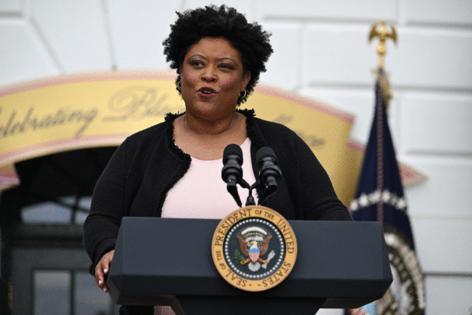White House asks for nearly $100 billion disaster relief package
Published in News & Features
WASHINGTON — President Joe Biden is seeking $98.6 billion in emergency disaster relief funding following a series of hurricanes this fall, most prominently Hurricane Helene that caused severe damage in North Carolina and across the region.
It’s a comprehensive package that extends back to unmet needs from prior disasters, encompassing earlier requests the White House submitted dating back to over a year ago, ranging from wildfires on Maui to tornadoes in the Midwest to human-caused calamities like the Francis Scott Key Bridge collapse in Baltimore.
The largest piece, $40 billion, would restore the Federal Emergency Management Agency’s dwindling fund for immediate disaster response needs; the next-largest, $21 billion, would allow the Agriculture Department to compensate farmers and ranchers for crop and livestock losses. The Department of Housing and Urban Development would get $12 billion; Transportation would get $8 billion for highway and bridge repairs, and much more.
“From rebuilding homes and reopening critical infrastructure, such as schools and roads — to supporting the nation’s farmers and ranchers and ensuring access to healthcare services, impacted communities await your response,” Biden wrote in a letter to congressional leaders accompanying the request. “There can be no delay.”
It’s now up to Congress, where lawmakers will have to decide how much to appropriate and whether or not to attach the package to the stopgap measure that will be needed to avoid a partial shutdown after Dec. 20. Speaker Mike Johnson, R-La., has made it clear that he wants a three-month stopgap bill that would last through March, with Republicans set to take back the White House and both chambers of Congress in the new year.
A senior administration official told reporters Monday that they want a bill sent to Biden’s desk “as soon as possible” but would not comment on possible timing or legislative vehicle for the package.
“As someone who helped tear down wet drywall, knowing your government has your back when you are going through some of the most difficult times of your life is a welcome comfort,” Office of Management and Budget Director Shalanda Young said on a call with reporters. “That’s why I’m not surprised that Speaker Johnson, my fellow Louisianan, has in his own words given people comfort that funding is on the way.”
Major components
Disaster relief fund: While the stopgap funding law enacted in September provided a $20.3 billion boost to FEMA’s disaster relief fund, the agency has now burned through $17.6 billion since the money became available Oct.1, FEMA Administrator Deanne Criswell told reporters Monday. Over $7.5 billion of that has gone toward Helene and Milton hurricane recovery efforts. The $40 billion refill the Biden administration is requesting would last through the rest of this fiscal year, Criswell said.
USDA: The proposal includes $21 billion for crop and livestock losses, plus $2.7 billion for a smattering of other department priorities such as debris removal, conservation assistance and compensation to forest-land owners for tree damages and rural utilities for damages to the electrical grid. The request also would provide additional nutrition funds for women, infants and children through the WIC program and for local food banks. And it would finance “comprehensive pay reform” for wildland firefighters.
Small Business Administration: The SBA funding appears most pressing, as that agency ran out of funding for new disaster loans in October. The agency has been processing requests but unable to provide new loans as it awaits more funding from Congress. The White House requested $2.25 billion to restart disaster loans, up from earlier estimates.
While there had been some discussions about pulling the SBA piece out of the package and fast-tracking it under a suspension of the rules in the House and by unanimous consent in the Senate, it does not appear that will happen. With Sen. Rand Paul, R-Ky., opposing funding for the agency that is not offset, it appears the door for quick SBA funding is closed, and it will ride with the rest of the package.
HUD: $12 billion is requested for HUD Community Development Block Grants, including prior requests for 2023 disasters, as well as for the aftermath of Milton and Helen.
Transportation: DOT would receive $8.1 billion to rebuild roads, bridges and other infrastructure destroyed by storms and “catastrophic failures from external causes,” namely the Key Bridge. The administration wants Congress to waive state matching requirements and instead pick up 100 percent of the cost, which the White House budget office said was on top of $350 million received from insurance proceeds. Local transit agencies would receive $57 million for hurricane damages.
EPA: The EPA would get $4.1 billion, including for long-term water system upgrades to make it more difficult for future storms to threaten water supplies and needs specific to Milton- and Helene-affected households, including septic system upgrades.
Health and Human Services: The HHS would get $2.7 billion to provide health care and social support in areas affected by Helene and Milton. Various components include Head Start funding and social-services block grants for child care for Milton and Helene survivors, as well as “supply chain resiliency” for intravenous fluids and other medical products.
Commerce: The Commerce Department would receive $2.3 billion, mainly for economic-development assistance grants for areas affected by disasters as well as funds for the National Oceanic and Atmospheric Administration to finish building two new “hurricane hunter” aircraft and buy a third to replace two aging ones that are being decommissioned.
Interior: Interior would get $158 million, about half of which would go toward a temporary boost for wildland firefighter pay and the rest for various priorities, such as $20 million for historical and cultural preservation efforts after the Maui fires last year.
Other details
The request also seeks $1 billion each for the Education Department for aid to schools and to the Energy Department for electrical grid upgrades. There’s also $1.5 billion split among other agencies for disaster-related purposes, including $463 million for the Army Corps of Engineers for costs incurred during the Key Bridge cleanup, dredging the Mississippi River due to low water levels and for other projects affected by the hurricanes.
Smaller pieces of the request include: $310 million for expansion of the South Bay International Wastewater Treatment Plant in San Diego, where residents are contending with sewage flowing from Mexico’s Tijuana River. The funding falls within the State Department’s jurisdiction.
Additionally, the Legal Services Corporation would receive $103 million to assist low-income survivors of disasters going back to 2023, and AmeriCorps would receive $80 million to send teams in for Milton and Helene recovery projects.
Flood insurance
One other request not specifically within the purview of the Appropriations committees: Biden wrote that the National Flood Insurance Program is set to exhaust its ability to pay claims for hurricane-related damages.
He asked lawmakers to wipe out “some or all” of the program’s roughly $20.5 billion in outstanding debt to the Treasury, so it can continue to operate without needing an increase in its statutory $30.4 billion borrowing cap. In the aftermath of the devastating 2017 hurricane season, Congress eliminated $16 billion in NFIP debt as part of a supplemental disaster aid package.
©2024 CQ-Roll Call, Inc., All Rights Reserved. Visit cqrollcall.com. Distributed by Tribune Content Agency, LLC.







Comments